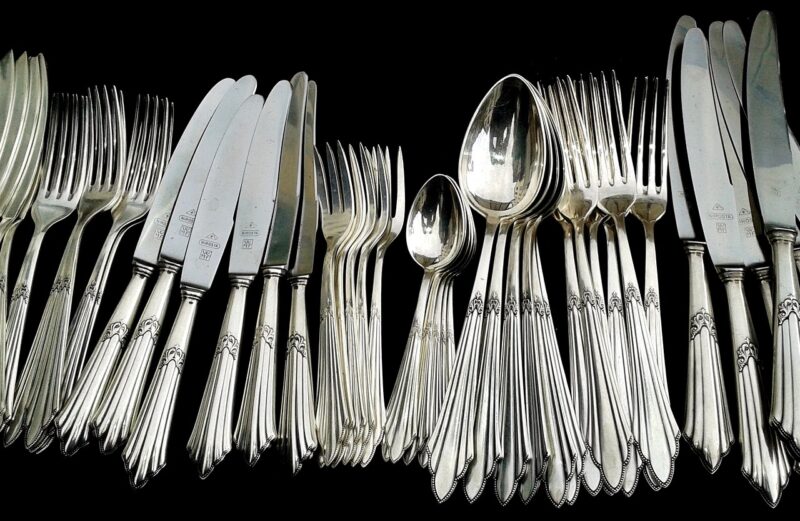The Role of Silver in Photographic Development: A Forgotten Art Form
November 14, 2024

Photography, in its purest form, is an intricate dance between light and dark, capturing fleeting moments that tell stories. At the heart of this process, particularly in the traditional darkroom techniques, lies an element that has long fascinated photographers: silver. Silver compounds have played a pivotal role in photographic development since the invention of photography itself, creating vivid images that evoke emotion and provoke thought.
1. A Brief History of Silver in Photography
The use of silver in photography dates back to the early 19th century when the first successful photographic processes were developed. The discovery of the light-sensitive properties of silver salts revolutionized how images could be captured and preserved. From the earliest daguerreotypes, created using polished metal plates coated with silver iodide, to the gelatin silver print—the mainstay of 20th-century photography—silver has been the backbone of various photographic techniques.
The daguerreotype, invented by Louis Daguerre in 1839, showcased silver’s critical role in photography. This process involved exposing a silver-coated copper plate to light, which created a permanent image after the plate was treated with mercury vapor. This technique captured incredibly detailed images, establishing the foundation for modern photography.
2. The Chemistry of Silver in Photographic Processes
Understanding how silver works in photographic development requires delving into the chemistry behind the photographic processes. The most traditional methods involve silver halides—compounds formed when silver combines with halogens such as bromine or chlorine.
When silver halides are exposed to light, they undergo a photochemical reaction. This reaction reduces the silver ions, creating tiny clusters of metallic silver in areas where light hits the photosensitive material. The more light that hits a particular area, the darker that region will become after development.
1. Silver Bromide: The most commonly used silver halide in photography, silver bromide is sensitive to blue and ultraviolet light. Once exposed, it’s processed in a developer solution that reduces the exposed silver bromide to metallic silver, leading to the formation of the image.
2. Silver Chloride: Another silver halide, silver chloride is used in some types of photographic papers. Like silver bromide, it also plays a crucial role in the image formation process.
By controlling the development and fixation processes, photographers can manipulate the tonal qualities and contrast of their images, resulting in photographic prints that are rich in detail and depth.
3. The Development Process: Where Silver Shines
The photographic development process is a fascinating journey that transforms latent images into visible works of art. Here’s a breakdown of the typical process:
1. Exposure: Light is allowed to hit a photosensitive surface, typically coated with silver halides. The amount and quality of light received determine the eventual image quality.
2. Development: The exposed material is immersed in a developer solution, reducing the exposed silver halides to metallic silver. The unexposed areas remain unchanged.
3. Stop Bath: This solution halts the development process, neutralizing the developer’s effect and preventing over-development.
4. Fixing: The fixing bath removes the unexposed silver halides, ensuring that the image does not continue to develop once the film or paper is washed and dried. The result is a stable, permanent image, primarily composed of metallic silver.
5. Washing and Drying: Finally, the image is carefully washed to remove any traces of chemicals, then dried to reveal the final print.
During this entire process, silver plays the starring role, transforming light into tangible memories captured on the photographic medium, whether film or paper.
4. The Aesthetics of Silver: Why It Matters
What sets silver photography apart from modern digital imaging is its aesthetic quality. The grain structure of silver images, the wide dynamic range, and the richness of tones are nearly impossible to replicate with digital methods.
Moreover, silver prints, particularly those developed using the traditional gelatin silver process, produce a unique depth and texture. The interplay of light on metallic silver gives images a warmth and richness that many photographers and art collectors revere. Collectors are often drawn to the unique qualities and archival nature of silver-based photographs, appreciating their historical significance and inherent beauty.
Factors Influencing Image Quality:
– Tonal Range: Traditional silver prints offer a broad range of tones, from deep blacks to bright whites, enhancing the emotional impact of photographs.
– Grain Structure: The unique grain of silver images plays a significant role in defining the overall image quality. It adds a character and dimension not often found in digital prints.
– Patina Over Time: Silver images have a tendency to develop a rich patina over the years, contributing to their vintage allure.
5. The Decline and Resurgence of Silver Photography
As the digital revolution swept through the photography community in the late 20th and early 21st centuries, many traditional processes fell into decline. Film cameras became less popular as digital photography dominated the market. However, there’s a renewed interest in silver photography, as both enthusiasts and professionals begin to rediscover the value of analog techniques.
Workshops and courses focusing on silver gelatin printing and other analog methods have gained popularity as photographers seek to reconnect with the tactile experience of creating images. Moreover, many artists find the deliberate nature of working with film and silver offers a unique satisfaction that digital photography cannot provide.
Contemporary Artists: Some artists explore the intersection of traditional silver photography and modern themes, creating stunning work that highlights the capabilities and beauty of this forgotten art form. Many photographers feel that working with silver enhances their connection to the art of photography, and the intentionality behind each shot cultivates a deeper appreciation for their craft.
6. Conclusion: Remembering Silver’s Legacy
In a world increasingly dominated by digital technology, the role of silver in photographic development serves as a reminder of the artistry and craftsmanship inherent in the photographic process. While advancements in imaging technology offer convenience and speed, they cannot replicate the unique aesthetic and emotional depth of traditional silver-based prints.
As photographers continue to experiment with hybrid techniques, blending digital and analog processes, the legacy of silver remains an essential part of the photographic conversation. Encouraging new generations to embrace and explore silver photography contributes to the revival of this craft, ensuring that this forgotten art form will not only survive but thrive in the years to come.
Whether you’re a seasoned pro or a curious beginner, consider stepping into the darkroom to work with silver and witness the magic of chemistry and light firsthand. Discovering the beauty of silver photography is an enriching experience, one that connects us with the history of the medium and the artistry it inspires.








